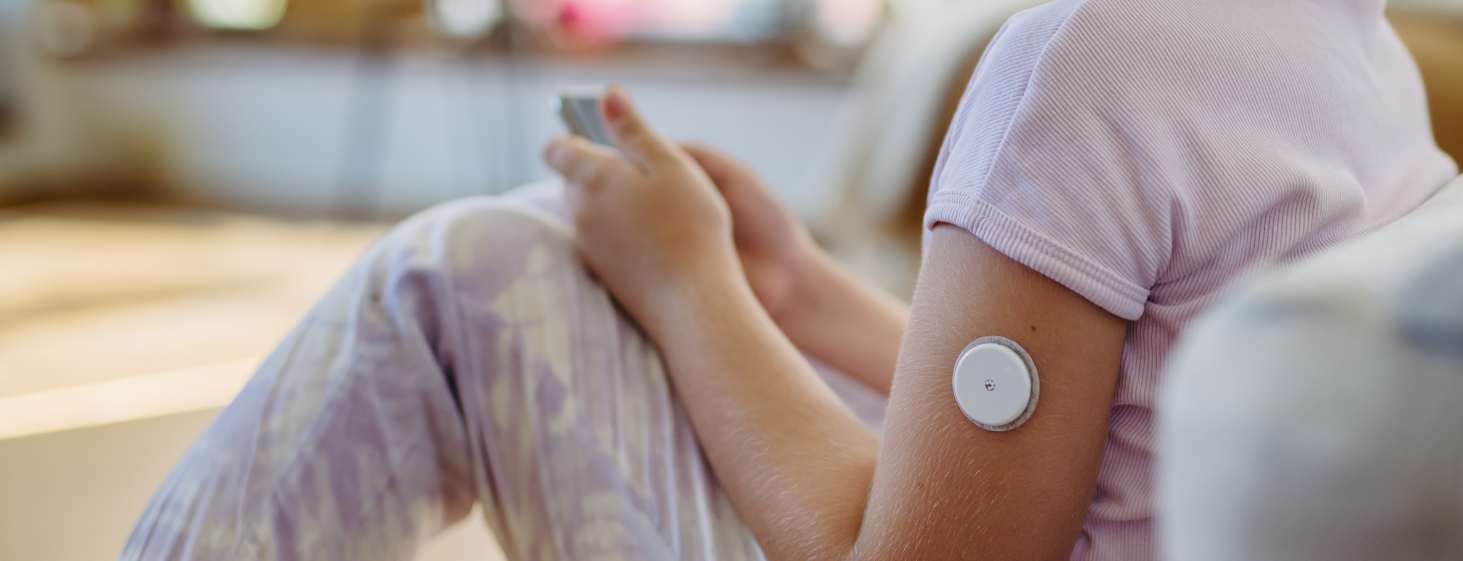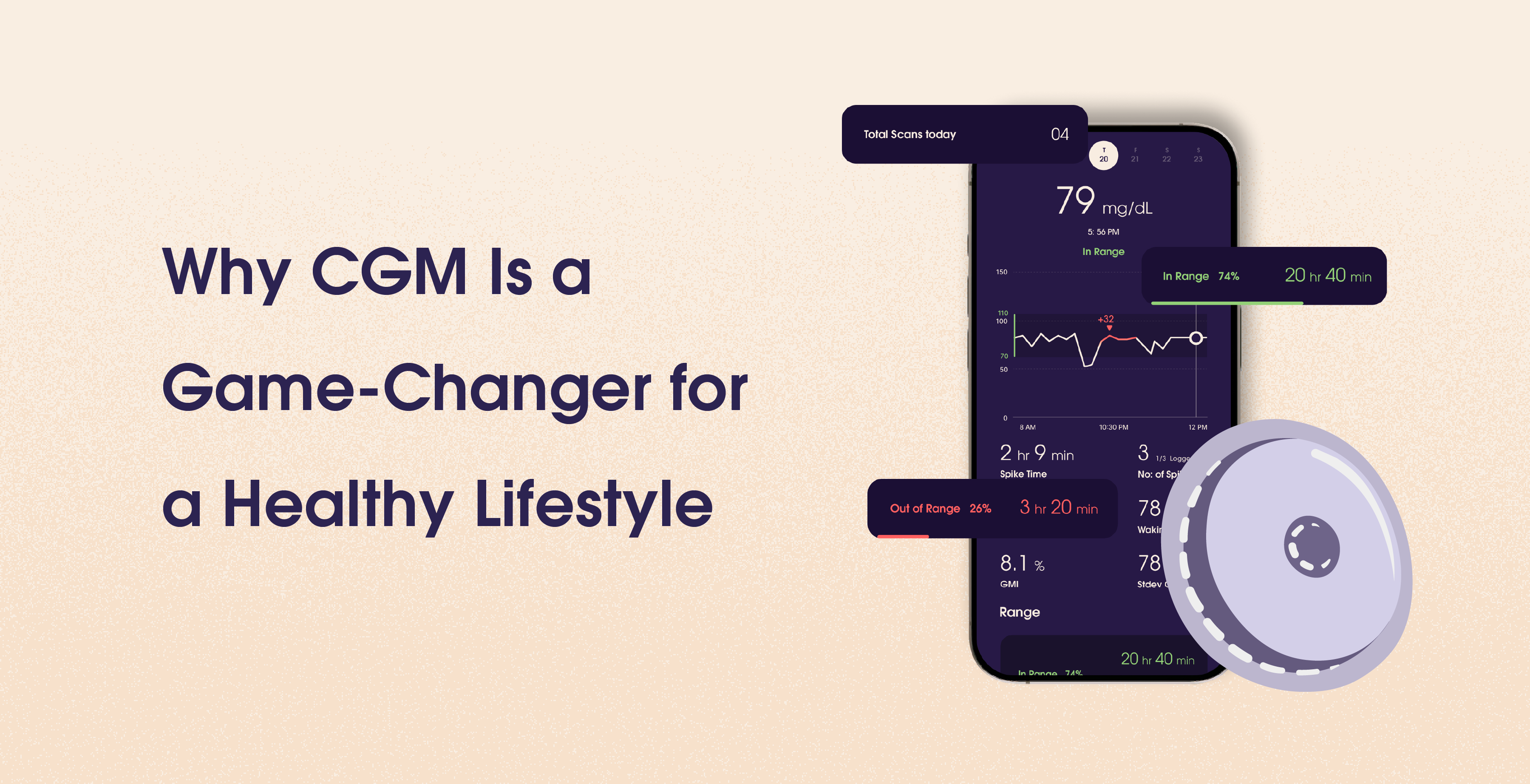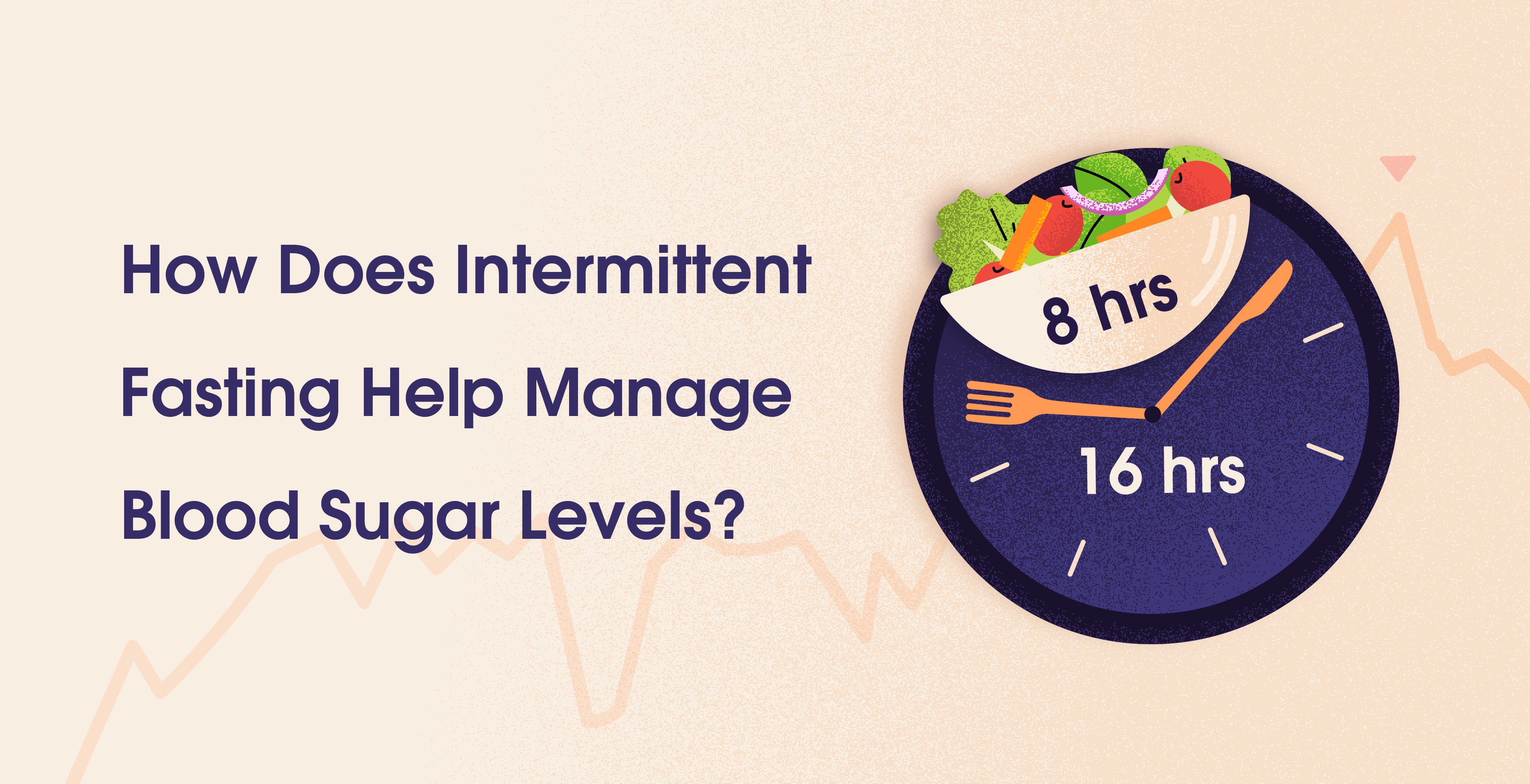CGMs for Prediabetes
Mar 10, 2024
Heer Chedda



Table Of Contents
Taking charge of your health is an empowering journey, and understanding your body's signals is crucial. In today's world, technology plays a significant role in this process, and continuous glucose monitors (CGMs) have emerged as potential tools for managing blood sugar levels.
But are they relevant if you have prediabetes? Let's delve into the world of CGMs, explore the intricacies of prediabetes, and answer the question: should you consider using a CGM for prediabetes?
Understanding CGMs: A Glimpse into Blood Sugar Trends
Imagine a tiny sensor that sits discreetly under your skin, constantly monitoring your blood sugar levels and transmitting the data wirelessly to a receiver or your smartphone. That's the essence of a CGM.
A continuous glucose monitor is a small device, typically worn on the abdomen, that tracks your blood sugar levels around the clock. It consists of a tiny sensor inserted under the skin that measures your interstitial glucose levels (the glucose found in the fluid between your cells) every few minutes.
This data is then transmitted wirelessly to a separate device like a smartphone app or dedicated reader so you can view your glucose readings in real-time. Many CGMs also have alarm functions to alert you if your levels go too high or too low.
Unlike traditional blood glucose meters that require a fingerprint sample, CGMs automatically provide a continuous stream of data with little interaction required from the user after initial setup. This gives you an incredibly detailed look at how your body responds to different foods, activities, medication, and other factors that can impact blood sugar.
Prediabetes: A Stepping Stone, Not a Dead End
Prediabetes, as the name suggests, is a precursor to type 2 diabetes. It signifies that your blood sugar levels are higher than normal but not high enough to be classified as diabetes. While it may not present immediate health concerns, it's crucial to address prediabetes, as it significantly increases your risk of developing type 2 diabetes down the line.
The Centers for Disease Control and Prevention (CDC) estimates that over 84 million adults in the United States have prediabetes, with many remaining undiagnosed. This highlights the importance of awareness and proactive measures to prevent the progression to type 2 diabetes, which carries significant health complications.
The key risk factors for prediabetes include being overweight, having an inactive lifestyle, being over age 45, having a family history of diabetes, and being from certain ethnic backgrounds. However, it's also possible to develop prediabetes without having any other risk factors.
Symptoms of prediabetes can be hard to detect at first because they often don't cause any clear symptoms at all. Some possible signs include increased thirst and urination, blurred vision, tingling in the hands or feet, and feeling tired more frequently. But many people don't experience noticeable symptoms until their condition has progressed to type 2 diabetes.
Causes, Risks, and Symptoms: Recognizing the Signs
Several factors can contribute to prediabetes, including:
Being overweight or obese
Having a family history of type 2 diabetes
Physical inactivity
Certain ethnicities
Gestational diabetes (diabetes during pregnancy)
Prediabetes often goes undetected as it may not present distinctive symptoms.
However, some individuals may experience:
Increased thirst
Frequent urination
Blurred vision
Fatigue
If you suspect you might be at risk for prediabetes, it's essential to consult your doctor for a proper diagnosis through a simple blood test. Early detection empowers you to take control and prevent the progression to type 2 diabetes.
Should You Use a CGM for Prediabetes?
So now that we understand what CGMs are and what prediabetes entails, you might be wondering - could using a continuous glucose monitor be helpful if you have prediabetes? The short answer is… potentially yes
Here are certain benefits that CGMs offer
Get Real-Time Glucose Data
One of the biggest advantages of CGMs is the wealth of concrete, real-time data they provide about how your body responds to different situations throughout the day. This level of insight is extremely difficult to get from standard blood glucose meters that only show individual readings.
With a CGM, you can literally see how your glucose levels fluctuate after eating different foods, engaging in activities like exercise, taking medication, experiencing stress, and so on. Having all of this data at your fingertips makes it much easier to understand your unique responses and make informed decisions to better manage your prediabetes.
Early Detection
The earlier you're able to detect blood sugar abnormalities or upward trends, the sooner you can take steps to course-correct. CGMs could allow you to pick up on the subtle glucose shifts that come with prediabetes before your condition potentially progresses to full-blown type 2 diabetes.
Motivate Positive Behavior Changes
There's something to be said for having clear biochemical evidence of how your choices impact your body at the moment. Seeing your glucose levels spike after a heavy meal or drop after a brisk walk can be highly motivating for adopting healthier habits like improving your diet and exercise regimen.
Room for Improvement
Of course, CGMs aren't perfect and there is still room for improvement when it comes to using them for prediabetes management. Some of the current drawbacks and areas of concern include:
Cost & Access
Continuous glucose monitors can be quite expensive, running several thousand dollars per year in many cases. And while they are covered by many insurance plans for type 1 and type 2 diabetes, coverage for prediabetes is far less common currently.
Accuracy
While CGMs provide an incredibly rich stream of glucose data, their readings can sometimes differ from standard blood samples, particularly during times of rapid fluctuation. More accurate sensors are always a goal.
Note: While CGMs offer valuable insights for individuals with diabetes, their role in prediabetes management remains under investigation. While studies suggest CGMs may be effective in identifying early signs of prediabetic blood sugar fluctuations, their cost-effectiveness and clinical benefit for this specific population are still being evaluated.
Managing Prediabetes without CGMs
Here are 5 other ways to help manage prediabetes:
Get Moving - Engaging in regular physical activity is key. You don't have to run marathons - studies show that simply getting 150 minutes per week of brisk walking can lower your diabetes risk by 58%! Even lighter activities like gardening or housework can make a dent.
Prioritize Plant Power - Eating more fiber-rich plant foods like veggies, fruits, legumes, and whole grains is a research-backed way to regulate blood sugar. One major review found that for every 15g increase in daily fiber intake, diabetes risk dropped by a whopping 25%!
Catch More Z's - Getting quality sleep is so important, yet often overlooked. Researchers found that folks sleeping less than 6 hours nightly had a 28% higher diabetes risk compared to those clocking 7-8 hours. Developing good sleep habits can really move the needle.
Learn to Chill - There's increasing evidence that chronic stress directly impacts blood sugar levels. One study revealed a 35% increased diabetes risk in those experiencing regular bursts of stress. Exploring relaxation methods like yoga, meditation or just scheduling more "me time" is worthwhile.
The beautiful thing is, you've got so many evidence-based tools at your disposal for getting prediabetes under control naturally. It doesn't require upending your whole lifestyle overnight. We are here to help you.
Frequently Asked Questions
Best CGM for prediabetes?
Among the top choices, the Dexcom G6 stands out for its accuracy, ease of use, and real-time glucose readings. There are other devices like Levels Health CGM. FreeStyle Libre, Eversense and Guardian Connect System.
Does insurance cover CGM for prediabetes?
Some insurance plans may cover CGM devices for individuals with prediabetes if deemed medically necessary by a healthcare provider. However, coverage criteria and requirements may differ between insurance plans, and preauthorization or documentation of medical necessity may be required. It's essential to check with your insurance provider directly to determine if CGM coverage is available for prediabetes under your specific plan.
Can you get a CGM for prediabetes?
The short answer is, yes you can! But getting a CGM isn't straightforward as they are expensive devices. You may want to check with your healthcare provider to see if you need one.
Is CGM good for prediabetes?
Yes, CGM can be beneficial for prediabetes management. It provides real-time insights into glucose levels, helping individuals understand how their lifestyle choices impact blood sugar. By monitoring trends and patterns, CGM empowers early intervention strategies, motivating healthier habits and potentially delaying or preventing the onset of diabetes. While not always covered by insurance for prediabetes, some individuals may choose to invest in CGM for proactive monitoring and personalized management.
What type of diabetes uses CGM?
Continuous glucose monitoring (CGM) is commonly used by individuals with type 1 diabetes and type 2 diabetes. It provides real-time data on glucose levels, allowing for better management of blood sugar fluctuations throughout the day and night. CGM is particularly valuable for people who require frequent insulin adjustments, such as those using insulin pumps or multiple daily injections.
References
Taking charge of your health is an empowering journey, and understanding your body's signals is crucial. In today's world, technology plays a significant role in this process, and continuous glucose monitors (CGMs) have emerged as potential tools for managing blood sugar levels.
But are they relevant if you have prediabetes? Let's delve into the world of CGMs, explore the intricacies of prediabetes, and answer the question: should you consider using a CGM for prediabetes?
Understanding CGMs: A Glimpse into Blood Sugar Trends
Imagine a tiny sensor that sits discreetly under your skin, constantly monitoring your blood sugar levels and transmitting the data wirelessly to a receiver or your smartphone. That's the essence of a CGM.
A continuous glucose monitor is a small device, typically worn on the abdomen, that tracks your blood sugar levels around the clock. It consists of a tiny sensor inserted under the skin that measures your interstitial glucose levels (the glucose found in the fluid between your cells) every few minutes.
This data is then transmitted wirelessly to a separate device like a smartphone app or dedicated reader so you can view your glucose readings in real-time. Many CGMs also have alarm functions to alert you if your levels go too high or too low.
Unlike traditional blood glucose meters that require a fingerprint sample, CGMs automatically provide a continuous stream of data with little interaction required from the user after initial setup. This gives you an incredibly detailed look at how your body responds to different foods, activities, medication, and other factors that can impact blood sugar.
Prediabetes: A Stepping Stone, Not a Dead End
Prediabetes, as the name suggests, is a precursor to type 2 diabetes. It signifies that your blood sugar levels are higher than normal but not high enough to be classified as diabetes. While it may not present immediate health concerns, it's crucial to address prediabetes, as it significantly increases your risk of developing type 2 diabetes down the line.
The Centers for Disease Control and Prevention (CDC) estimates that over 84 million adults in the United States have prediabetes, with many remaining undiagnosed. This highlights the importance of awareness and proactive measures to prevent the progression to type 2 diabetes, which carries significant health complications.
The key risk factors for prediabetes include being overweight, having an inactive lifestyle, being over age 45, having a family history of diabetes, and being from certain ethnic backgrounds. However, it's also possible to develop prediabetes without having any other risk factors.
Symptoms of prediabetes can be hard to detect at first because they often don't cause any clear symptoms at all. Some possible signs include increased thirst and urination, blurred vision, tingling in the hands or feet, and feeling tired more frequently. But many people don't experience noticeable symptoms until their condition has progressed to type 2 diabetes.
Causes, Risks, and Symptoms: Recognizing the Signs
Several factors can contribute to prediabetes, including:
Being overweight or obese
Having a family history of type 2 diabetes
Physical inactivity
Certain ethnicities
Gestational diabetes (diabetes during pregnancy)
Prediabetes often goes undetected as it may not present distinctive symptoms.
However, some individuals may experience:
Increased thirst
Frequent urination
Blurred vision
Fatigue
If you suspect you might be at risk for prediabetes, it's essential to consult your doctor for a proper diagnosis through a simple blood test. Early detection empowers you to take control and prevent the progression to type 2 diabetes.
Should You Use a CGM for Prediabetes?
So now that we understand what CGMs are and what prediabetes entails, you might be wondering - could using a continuous glucose monitor be helpful if you have prediabetes? The short answer is… potentially yes
Here are certain benefits that CGMs offer
Get Real-Time Glucose Data
One of the biggest advantages of CGMs is the wealth of concrete, real-time data they provide about how your body responds to different situations throughout the day. This level of insight is extremely difficult to get from standard blood glucose meters that only show individual readings.
With a CGM, you can literally see how your glucose levels fluctuate after eating different foods, engaging in activities like exercise, taking medication, experiencing stress, and so on. Having all of this data at your fingertips makes it much easier to understand your unique responses and make informed decisions to better manage your prediabetes.
Early Detection
The earlier you're able to detect blood sugar abnormalities or upward trends, the sooner you can take steps to course-correct. CGMs could allow you to pick up on the subtle glucose shifts that come with prediabetes before your condition potentially progresses to full-blown type 2 diabetes.
Motivate Positive Behavior Changes
There's something to be said for having clear biochemical evidence of how your choices impact your body at the moment. Seeing your glucose levels spike after a heavy meal or drop after a brisk walk can be highly motivating for adopting healthier habits like improving your diet and exercise regimen.
Room for Improvement
Of course, CGMs aren't perfect and there is still room for improvement when it comes to using them for prediabetes management. Some of the current drawbacks and areas of concern include:
Cost & Access
Continuous glucose monitors can be quite expensive, running several thousand dollars per year in many cases. And while they are covered by many insurance plans for type 1 and type 2 diabetes, coverage for prediabetes is far less common currently.
Accuracy
While CGMs provide an incredibly rich stream of glucose data, their readings can sometimes differ from standard blood samples, particularly during times of rapid fluctuation. More accurate sensors are always a goal.
Note: While CGMs offer valuable insights for individuals with diabetes, their role in prediabetes management remains under investigation. While studies suggest CGMs may be effective in identifying early signs of prediabetic blood sugar fluctuations, their cost-effectiveness and clinical benefit for this specific population are still being evaluated.
Managing Prediabetes without CGMs
Here are 5 other ways to help manage prediabetes:
Get Moving - Engaging in regular physical activity is key. You don't have to run marathons - studies show that simply getting 150 minutes per week of brisk walking can lower your diabetes risk by 58%! Even lighter activities like gardening or housework can make a dent.
Prioritize Plant Power - Eating more fiber-rich plant foods like veggies, fruits, legumes, and whole grains is a research-backed way to regulate blood sugar. One major review found that for every 15g increase in daily fiber intake, diabetes risk dropped by a whopping 25%!
Catch More Z's - Getting quality sleep is so important, yet often overlooked. Researchers found that folks sleeping less than 6 hours nightly had a 28% higher diabetes risk compared to those clocking 7-8 hours. Developing good sleep habits can really move the needle.
Learn to Chill - There's increasing evidence that chronic stress directly impacts blood sugar levels. One study revealed a 35% increased diabetes risk in those experiencing regular bursts of stress. Exploring relaxation methods like yoga, meditation or just scheduling more "me time" is worthwhile.
The beautiful thing is, you've got so many evidence-based tools at your disposal for getting prediabetes under control naturally. It doesn't require upending your whole lifestyle overnight. We are here to help you.
Frequently Asked Questions
Best CGM for prediabetes?
Among the top choices, the Dexcom G6 stands out for its accuracy, ease of use, and real-time glucose readings. There are other devices like Levels Health CGM. FreeStyle Libre, Eversense and Guardian Connect System.
Does insurance cover CGM for prediabetes?
Some insurance plans may cover CGM devices for individuals with prediabetes if deemed medically necessary by a healthcare provider. However, coverage criteria and requirements may differ between insurance plans, and preauthorization or documentation of medical necessity may be required. It's essential to check with your insurance provider directly to determine if CGM coverage is available for prediabetes under your specific plan.
Can you get a CGM for prediabetes?
The short answer is, yes you can! But getting a CGM isn't straightforward as they are expensive devices. You may want to check with your healthcare provider to see if you need one.
Is CGM good for prediabetes?
Yes, CGM can be beneficial for prediabetes management. It provides real-time insights into glucose levels, helping individuals understand how their lifestyle choices impact blood sugar. By monitoring trends and patterns, CGM empowers early intervention strategies, motivating healthier habits and potentially delaying or preventing the onset of diabetes. While not always covered by insurance for prediabetes, some individuals may choose to invest in CGM for proactive monitoring and personalized management.
What type of diabetes uses CGM?
Continuous glucose monitoring (CGM) is commonly used by individuals with type 1 diabetes and type 2 diabetes. It provides real-time data on glucose levels, allowing for better management of blood sugar fluctuations throughout the day and night. CGM is particularly valuable for people who require frequent insulin adjustments, such as those using insulin pumps or multiple daily injections.
References
Table Of Contents
Table Of Contents
Table Of Contents
Read More


Mar 25, 2025
Sayfali Rawlani


Mar 20, 2025
Sayfali Rawlani


Mar 6, 2025
Sayfali Rawlani



Company
Copyright © 2025 trst health. All right reserved.

